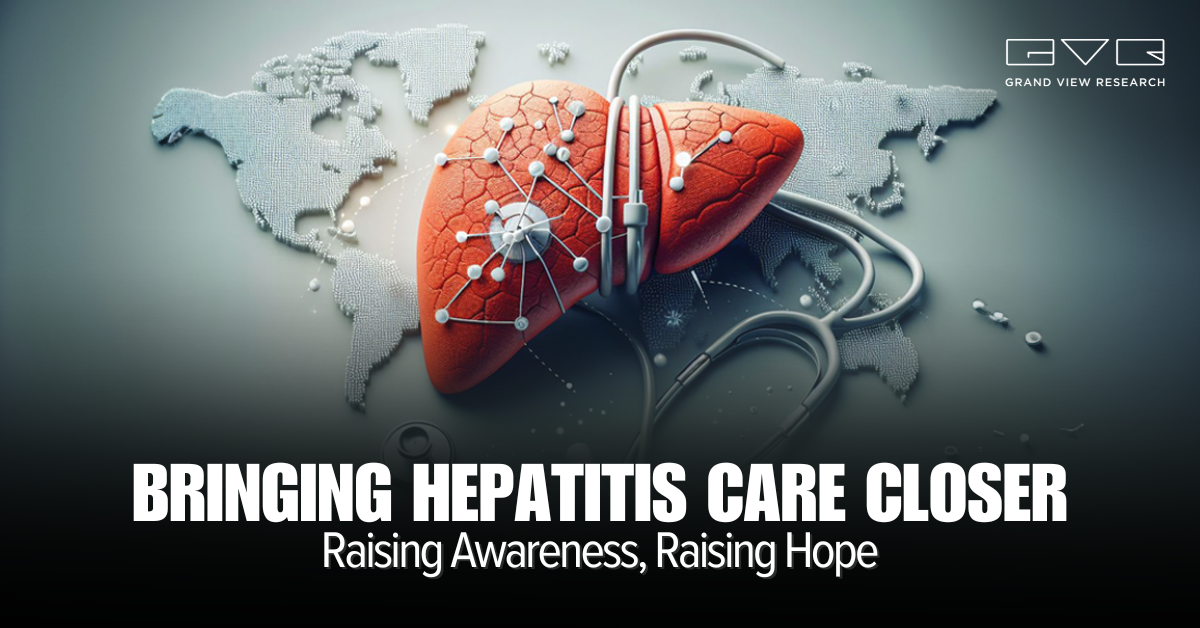Bringing Hepatitis Care Closer: Raising Awareness, Raising Hope
More than 304 million people lived with chronic viral hepatitis B and C globally in 2022, while around 1.3 million people succumbed to the viral infection during the year, infers WHO. Viral hepatitis infection, often ignored and treatment delayed, can lead to liver disease, cancer and even death. Hepatitis can be caused by viruses, germs, some medicines, diseases and heavy alcohol use.

Hepatitis B and C are the most common among the five strains of the hepatitis viruses. The WHO’s 2024 Global Hepatitis Report asserts that around 1.3 million people succumb to hepatitis every year, making the disease the second leading infectious cause of death globally. If the current trend continues, viral hepatitis will be a more deadly disease than tuberculosis, malaria and HIV/AIDS combined by 2040.
Stakeholders from all walks of life are emphasizing hepatitis care, affordability and accessibility to eliminate the infection.
-
The WHO has set the target to eradicate viral hepatitis as a public health threat by 2030. It becomes critical to recognize international days to raise awareness, hope and fight against hepatitis.
-
The World Hepatitis Day is observed on July 28th. Under the theme “It’s time for action,” the year 2024 exhorts collaborative action to expand access to treatment and diagnosis in countries.
-
Merely one in four people living with hepatitis B have been diagnosed, while one in five received ‘appropriate treatment.’
-
It is high time to act now to save lives, minimize liver cancer cases, prevent new infections, reduce healthcare costs and achieve hepatitis elimination goals by 2030.
Hepatitis Diagnostics-Key to Combating the Infection
The prevailing trends suggest the need to make hepatitis diagnostics more accessible and closer to the community. In July 2024, the WHO announced that it had prequalified the first self-test for the hepatitis C virus. The global watchdog claims that the OraQuick HCV self-test can offer critical support in boosting testing and diagnosis access. Alarmingly, around 50 million people are living with chronic hepatitis C virus infection.
The 2030 goal can be achieved if diagnostics and treatment pick pace. For instance, the detection of HAV-specific immunoglobulin G (IgM) antibodies in the blood helps make a specific diagnosis. Furthermore, reverse transcriptase polymerase chain reaction (RT-PCR) is sought-after to detect the hepatitis A virus RNA. In June 2024, the U.S. FDA allowed marketing authorization of the first point-of-care hepatitis RNA test. The test authorization leverages a test-and-treat approach where an individual can be tested for HCV. If the person is found positive (for HCV RNA), the individual can receive treatment during the same healthcare visit.
Similarly, liver biopsy, blood tests and imaging tests received an impetus to foster hepatitis diagnosis. For instance, in July 2022, the Economic Times, quoting the findings published in the journal Gut, stated that researchers had created a liquid biopsy test for Non-alcoholic steato-hepatitis (NASH) and liver fibrosis.
Hepatitis diagnosis and testing unlock avenues to prevention and treatment and respond effectively to the hepatitis epidemic.
Hepatitis Therapeutics: Need of the Hour
The rising prevalence of technologically advanced products has fueled the goal of hepatitis virus eradication. To illustrate, in July 2024, AusperBio received a Breakthrough Therapy Designation (BTD) for AHB-137 in chronic hepatitis B (CHB) treatment. Meanwhile, in February 2024, the U.S FDA granted Fast Track Designation to GSK for bepirovirsen for CHB treatment.
While robust strategies and investments have expedited the penetration of better antiviral drugs, millions of people still live with untreated and undiagnosed hepatitis. The WHO has set guidelines to help countries bolster the use of advanced tools to promote and diagnose cost-effective curative medication to end hepatitis.
-
The 2024 guidelines emphasize simplified treatment criteria for adolescents and adults and expanded eligibility for antiviral prophylaxis to prevent mother-to-child transmission of chronic hepatitis B (HBV) among pregnant women.
-
It also focuses on boosting HBV diagnostics using point-of-care viral load testing to address the diagnosis of Delta coinfection, a prominent cause of HBV-related morbidity and mortality, with the help of testing protocols and approaches to providing high-quality HBV services.
-
The new guideline offers updated evidence-based recommendations on priority HBV topics, such as alternative antiviral therapy regimens.
So, what is the Bottom line?
The burden of hepatitis B and hepatitis C infections is high in low-income countries, especially in Asia and Africa. Global stakeholders are expected to come on the same page to enhance access to health products for hepatitis B and C in low- and middle-income countries. For instance, over 91 million Africans are living with hepatitis. Regional and national efforts by governments, WHO and other organizations will be a vital cog to eliminate hepatitis by 2030.
Indeed, person-centered testing, prevention and treatment of viral infection will be prominent. Policymakers and partners are expected to play their part in making services available through primary healthcare services and ramping up hepatitis B immunization coverage to achieve 90% vaccination target by 2030.
To schedule a free market intelligence database demo, please complete the form below:
Service Guarantee
-
Insured Buying
This report has a service guarantee. We stand by our report quality.
-
Confidentiality
Your transaction & personal information is safe and secure.
-
Custom research service
Design an exclusive study to serve your research needs.
-
24/5 Research support
Get your queries resolved from an industry expert.